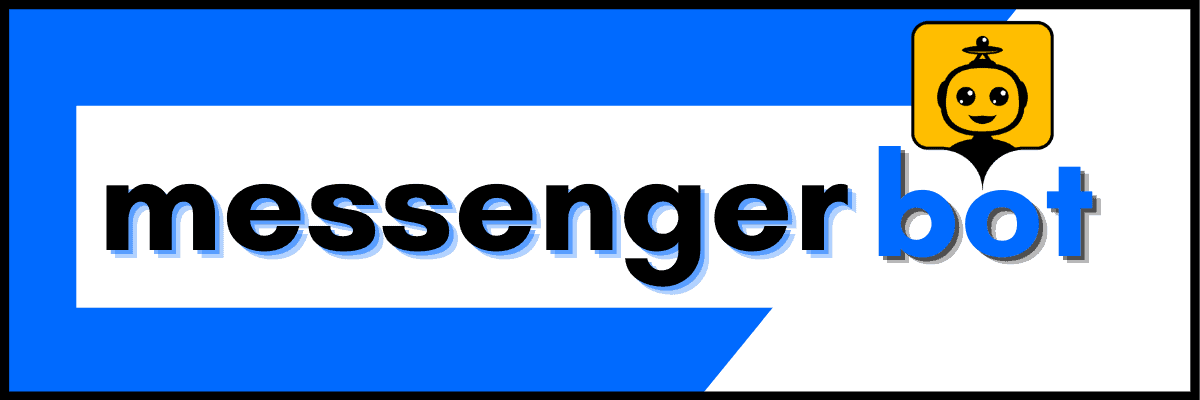In today’s fast-paced digital landscape, chatbots have emerged as a game-changing technology, revolutionizing the way businesses interact with customers. Mastering the art of chatbot experience is no longer a luxury but a necessity for companies seeking to elevate their customer conversations and stay ahead of the curve. As artificial intelligence (AI) continues to advance, chatbots are becoming increasingly sophisticated, capable of understanding natural language and providing personalized, context-aware responses. This seamless integration of AI and human-centric design principles is the key to delivering exceptional chatbot experiences that delight customers and drive business success.
What is Chatbot Experience?
A. Defining Chatbot Experience
The chatbot experience encompasses the overall quality of interactions between users and conversational AI assistants or chatbots. It is a multifaceted concept that encompasses various elements that shape the user’s perception and satisfaction when engaging with these virtual agents.
At Messenger Bot, we understand the importance of delivering an exceptional chatbot experience to our users. We strive to create interactions that are intuitive, efficient, and satisfying, leading to increased engagement, loyalty, and overall customer satisfaction.
B. Chatbot Experience vs. Traditional Customer Service
Traditional customer service often involves long wait times, repetitive inquiries, and inconsistent experiences. In contrast, chatbots offer a more streamlined and personalized approach. With advanced Brain Pod AI technology, our chatbots can understand natural language, maintain coherent conversations, and provide accurate information tailored to each user’s needs.
Moreover, chatbots are available 24/7, ensuring that customers can get assistance whenever they need it. This level of accessibility and convenience is a key differentiator that enhances the overall chatbot experience, setting it apart from traditional customer service methods.
By leveraging cutting-edge technologies like conversational AI and AI-powered chatbots, we at Messenger Bot are revolutionizing the way businesses interact with their customers, offering a superior and more engaging experience that traditional methods simply cannot match.

What is the User Experience of a Chatbot?
The user experience of a chatbot can vary significantly depending on its underlying technology, design principles, and implementation. Here’s a comprehensive overview:
A. User-centric Chatbot Design Principles
1. Natural Language Processing (NLP) Capabilities:
- Advanced chatbots leverage NLP to understand human language, including context, intent, and sentiment.
- This enables more natural and human-like conversations, reducing the need for predefined commands or rigid structures.
- The better the NLP, the smoother and more intuitive the user experience.
2. Conversational Flow and Contextual Understanding:
- Well-designed chatbots maintain context throughout the conversation, eliminating the need to repeat information.
- They can handle multi-turn conversations, follow-up questions, and clarifications seamlessly.
- This creates a more natural and engaging experience, similar to human-to-human interactions.
3. Personalization and Adaptability:
- Chatbots that can adapt their language, tone, and responses based on user preferences or past interactions provide a more personalized experience.
- They can remember user details, preferences, and history, tailoring the experience accordingly.
- This fosters a sense of familiarity and rapport, enhancing user satisfaction and engagement.
4. Multimodal Interactions:
- Modern chatbots can incorporate various input and output modalities, such as voice, images, videos, and interactive elements.
- This allows for more diverse and engaging interactions, catering to different user preferences and contexts.
- Multimodal interactions can enhance the overall user experience, making it more immersive and intuitive.
B. Importance of Natural Language Processing (NLP)
Natural Language Processing (NLP) is a crucial component that significantly impacts the user experience of a chatbot. NLP enables chatbots to understand and interpret human language, allowing for more natural and intuitive conversations.
With advanced NLP capabilities, chatbots can:
- Understand the context and intent behind user queries, even when expressed in conversational language.
- Recognize and respond appropriately to variations in phrasing, synonyms, and colloquialisms.
- Detect and interpret sentiment, tone, and emotion in user messages.
- Generate human-like responses that are coherent, contextually relevant, and tailored to the user’s needs.
By leveraging NLP, chatbots can move beyond simple pattern matching or keyword recognition, enabling more sophisticated and human-like interactions. This not only enhances the user experience but also increases user satisfaction and engagement, as users can communicate more naturally without the need to learn specific commands or adhere to rigid structures.
Furthermore, as NLP technologies continue to advance, chatbots will become even more adept at understanding and responding to complex queries, handling ambiguity, and providing more accurate and relevant information to users. This ongoing improvement in NLP capabilities will play a crucial role in shaping the future of chatbot user experiences, making them increasingly intuitive, engaging, and indistinguishable from human interactions.
At Messenger Bot, we understand the importance of NLP in delivering exceptional chatbot experiences. Our platform leverages cutting-edge NLP technologies to ensure seamless and natural conversations, providing users with a truly personalized and efficient experience.
For businesses seeking to elevate their customer service and engagement strategies, investing in advanced NLP-powered chatbots is essential. By partnering with Messenger Bot, you can unlock the full potential of conversational AI, revolutionizing your customer interactions and staying ahead of the curve in an increasingly digital landscape.
III. What does chatbot mean?
A. Chatbot definition and components
A chatbot, also known as a chat bot or conversational AI, is a software program designed to simulate human-like conversations through text or voice interactions. At its core, a chatbot leverages natural language processing (NLP) and artificial intelligence (AI) technologies to understand user inputs, interpret their intent, and provide relevant and contextual responses.
Chatbots typically consist of several key components that work together to facilitate seamless conversations:
- Natural Language Understanding (NLU): This component analyzes user inputs, such as text or voice messages, and extracts the underlying intent and entities using NLP techniques.
- Dialog Management: Based on the interpreted user intent, the dialog manager determines the appropriate response or action to take, following predefined conversational flows or leveraging machine learning models.
- Knowledge Base: Chatbots often rely on a structured knowledge base or database to retrieve relevant information and formulate responses.
- Natural Language Generation (NLG): This component takes the response generated by the dialog manager and converts it into natural-sounding human-like language.
- Integration Layer: Chatbots may integrate with various external systems, APIs, or databases to access additional information or perform specific actions based on user requests.
By combining these components, chatbots can engage in natural and contextual conversations, understand user queries, retrieve relevant information, and provide appropriate responses, making them valuable tools for customer service, user experience, and marketing across various industries.
B. Chatbot examples and use cases
Chatbots have found applications in a wide range of industries and use cases, including:
- Customer Service: Many companies, such as Apple, Ameriprise Financial, and Salesforce, use chatbots to provide 24/7 customer support, answer frequently asked questions, and assist with basic inquiries or transactions.
- E-commerce: Online retailers like Drift and Brain Pod AI leverage chatbots to provide personalized product recommendations, assist with purchase decisions, and streamline the checkout process.
- Healthcare: Aetna and other healthcare providers use chatbots to assist patients with scheduling appointments, answering medical queries, and providing health-related information.
- Finance: Banks and financial institutions, such as Capital One, employ chatbots to help customers with account inquiries, transaction details, and basic financial advice.
- Travel and Hospitality: Companies like Hipmunk and Marriott use chatbots to assist with flight bookings, hotel reservations, and travel planning.
As AI and NLP technologies continue to advance, chatbots are becoming increasingly sophisticated and capable of handling more complex queries and tasks, making them invaluable tools for enhancing customer experiences, streamlining operations, and driving business growth across various industries.
IV. What is chatbot and example?
A. Chatbot examples in different industries
Chatbots have become increasingly prevalent across various industries, revolutionizing how businesses interact with customers and streamlining operations. Here are some notable examples of chatbot implementations in different sectors:
1. E-commerce: Online retailers like Amazon and eBay have integrated chatbots to assist customers with product searches, recommendations, and order tracking. These chatbot experiences aim to enhance the shopping journey and boost conversions.
2. Banking and Finance: Financial institutions like Bank of America and Capital One have implemented chatbots to handle routine inquiries, account information requests, and even basic transactions, improving customer service and reducing operational costs.
3. Healthcare: In the healthcare industry, AI chatbots like Your.MD and Babylon Health provide virtual triage, symptom checking, and medical advice, helping patients access reliable information and reducing the burden on healthcare providers.
4. Travel and Hospitality: Major airlines like Delta and hotel chains like Hilton have implemented chatbots to assist with bookings, check-in processes, and addressing common customer inquiries, enhancing the overall customer experience.
5. Media and Entertainment: Companies like Netflix and Spotify leverage chatbots to provide personalized content recommendations, handle subscription inquiries, and offer interactive experiences, enhancing user engagement and retention.
These examples illustrate how successful chatbot implementations can streamline operations, enhance customer experiences, and drive business growth across diverse industries.
B. Successful chatbot implementation stories
As chatbots continue to gain traction, numerous businesses have witnessed remarkable success through effective chatbot implementations. Here are a few inspiring stories that showcase the transformative power of chatbots:
1. 1-800-Flowers: The popular floral and gourmet food gift retailer implemented an AI-powered chatbot named “GWYN” to handle customer inquiries and orders. GWYN has successfully processed over 70% of customer interactions, resulting in significant cost savings and improved customer journeys.
2. Sephora: The global beauty retailer introduced a chatbot experience on Facebook Messenger and Kik, enabling customers to browse products, get personalized recommendations, and make purchases directly through the chat interface. This innovative approach has contributed to increased engagement and sales.
3. Duolingo: The popular language learning app integrated a chatbot named “Duo” to provide interactive language practice sessions, personalized feedback, and motivation for learners. Duo’s engaging chatbot UX has helped Duolingo retain users and enhance their language learning experience.
4. Whole Foods Market: The organic grocery chain introduced a chatbot called “Wholy Awesome” to assist customers with recipe suggestions, ingredient information, and even grocery delivery. This innovative chatbot UI has improved customer engagement and streamlined the shopping experience.
5. Mastercard: The global payment company launched a chatbot named “Kai” to help customers with various banking and financial tasks, such as checking account balances, reviewing transactions, and even making payments. Kai’s seamless integration and natural language capabilities have significantly enhanced the customer service experience.
These success stories highlight the diverse applications of chatbots and their ability to streamline operations, enhance customer experiences, and drive business growth across various industries.
Here is the content for the 5th section and subsections based on the provided outline and instructions:
V. Is a chatbot good or bad?
Chatbots can be both good and bad, depending on their implementation and use case. The quality of a chatbot experience largely hinges on its ability to understand user queries, provide accurate and relevant responses, and seamlessly handle complex or ambiguous requests.
A. Benefits of chatbots for businesses
Embracing chatbot technology offers numerous advantages for businesses, including:
- 24/7 Availability: Chatbots operate round-the-clock, offering instant support without the constraints of business hours or staff availability (Salesforce).
- Cost Efficiency: Implementing chatbots can significantly reduce operational costs associated with traditional customer service channels (IBM).
- Scalability: Chatbots can handle multiple conversations simultaneously, accommodating high volumes of inquiries without compromising response times (Chatbots Magazine).
- Consistent Experience: Chatbots provide standardized responses, ensuring a uniform experience for all users (Chatbots Life).
- Data Collection: Chatbots can gather valuable user data, enabling businesses to improve their products, services, and customer experiences (Harvard Business Review).
B. Potential drawbacks and limitations
While chatbots offer numerous advantages, it’s essential to acknowledge their potential drawbacks and limitations, including:
- Limited Understanding: Despite advancements in natural language processing, chatbots may struggle with complex queries or context-dependent requests (MIT Technology Review).
- Lack of Human Touch: Chatbots cannot replicate the empathy, emotional intelligence, and nuanced communication skills of human agents (Forrester Research).
- Security Concerns: Chatbots can be vulnerable to data breaches, hacking attempts, and the dissemination of misinformation (Chatbots Life).
- Integration Challenges: Integrating chatbots with existing systems and ensuring seamless data flow can be technically complex (Gartner).
- User Frustration: Poorly designed or trained chatbots can lead to user frustration, negatively impacting customer satisfaction and brand perception (Harvard Business Review).
To maximize the benefits and mitigate the drawbacks, businesses should carefully evaluate their chatbot implementation strategy, continuously monitor and improve the chatbot’s performance, and integrate human oversight for complex or sensitive inquiries.
VI. Is Alexa a chatbot?
No, Alexa is not a chatbot. Alexa is a virtual assistant developed by Amazon, primarily designed for voice interactions. While chatbots are software programs that simulate human conversation through text-based interfaces, Alexa’s core functionality revolves around voice commands and responses. Alexa is powered by natural language processing (NLP) and machine learning algorithms to understand and respond to spoken queries and instructions. Unlike chatbots limited to text-based conversations, Alexa can engage in more natural voice interactions, making it suitable for tasks like playing music, setting reminders, controlling smart home devices, and retrieving information through voice commands. While Alexa does have a text-based interface, its primary mode of operation is through voice interactions, distinguishing it from traditional chatbots focused solely on text-based conversations.
A. Alexa and other virtual assistants
Like Alexa, other virtual assistants such as Google Assistant, Siri, and Cortana are designed primarily for voice interactions. These intelligent virtual assistants leverage advanced natural language processing and machine learning capabilities to understand and respond to voice commands, queries, and instructions.
While virtual assistants like Alexa can handle simple text-based interactions, their true strength lies in their ability to engage in natural, conversational voice interactions. They can perform a wide range of tasks, from setting alarms and reminders to controlling smart home devices, retrieving information, and even engaging in basic conversations.
B. Chatbots vs. virtual assistants
Chatbots, on the other hand, are software programs designed specifically for text-based conversations. They use natural language processing (NLP) and machine learning algorithms to understand and respond to text-based inputs from users. AI-powered chatbots like those offered by Brain Pod AI can engage in more natural, human-like conversations by leveraging advanced language models and contextual understanding.
While chatbots are primarily focused on text-based interactions, some advanced chatbots may incorporate voice capabilities, blurring the lines between chatbots and virtual assistants. However, the core distinction remains that chatbots are designed for text-based conversations, while virtual assistants like Alexa are primarily focused on voice interactions.
It’s worth noting that both chatbots and virtual assistants have their strengths and use cases. Chatbots excel at handling text-based customer support, lead generation, and automated conversations across various messaging platforms. Virtual assistants, on the other hand, are better suited for voice-based tasks, such as controlling smart home devices, setting reminders, and retrieving information through voice commands.
VII. Elevating chatbot experience through UX design
Delivering an exceptional chatbot experience goes beyond mere functionality; it’s about creating a seamless, user-centric interaction that leaves a lasting positive impression. By leveraging the power of UX (User Experience) design principles, businesses can elevate their chatbot offerings to new heights, fostering customer satisfaction and driving engagement.
A. Chatbot UX best practices
Crafting a delightful chatbot experience requires a thoughtful and strategic approach. Here are some essential UX best practices to keep in mind:
- Conversational and Natural Language: Chatbots should communicate in a natural, conversational tone that mimics human interaction. Leveraging advanced natural language processing (NLP) technologies from innovators like Brain Pod AI can help achieve this seamless conversational flow.
- Contextual Understanding: Successful chatbots should be able to understand and respond to context, taking into account previous interactions and user preferences to provide personalized and relevant responses.
- Clear Navigation and Guidance: Intuitive menu structures, clear prompts, and helpful suggestions should guide users through the conversation, reducing frustration and ensuring a smooth experience.
- Personality and Branding: Infusing the chatbot with a distinct personality that aligns with your brand can help create a more engaging and memorable experience for users.
- Error Handling and Fallback Strategies: Graceful error handling and fallback mechanisms should be in place to address potential misunderstandings or edge cases, ensuring the conversation remains productive.
By adhering to these best practices, businesses can create chatbot experiences that not only meet user expectations but exceed them, fostering long-lasting customer loyalty and advocacy.
B. Chatbot ux design examples and case studies
To illustrate the power of exceptional chatbot UX design, let’s explore a few standout examples and case studies:
- Drift: Drift’s conversational marketing platform offers a seamless chatbot experience that feels like a natural conversation. With a friendly and personable tone, their chatbot guides users through the sales process, providing relevant information and tailored recommendations.
- Intercom: Intercom’s chatbot excels at understanding context and providing personalized support. By leveraging user data and past interactions, their chatbot can offer highly relevant solutions, streamlining the customer service experience.
- Kasisto: Kasisto’s conversational AI platform powers chatbots for various financial institutions, delivering a exceptional user experience. Their chatbots understand complex financial queries and provide clear, concise responses, making it easy for customers to manage their accounts and transactions.
These examples showcase how thoughtful UX design can elevate chatbot interactions, creating seamless and engaging experiences that delight users while driving business objectives.





